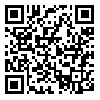Volume 24, Issue 3 (7-2024)
ijdld 2024, 24(3): 154-161 |
Back to browse issues page
Download citation:
BibTeX | RIS | EndNote | Medlars | ProCite | Reference Manager | RefWorks
Send citation to:



BibTeX | RIS | EndNote | Medlars | ProCite | Reference Manager | RefWorks
Send citation to:
Soroosh S. The Frequency and Financial Impact of Musculoskeletal Disorders in Military. ijdld 2024; 24 (3) :154-161
URL: http://ijdld.tums.ac.ir/article-1-6302-en.html
URL: http://ijdld.tums.ac.ir/article-1-6302-en.html
Rhematology Research center, AJA university for medical sciences, Tehran, Iran , soosansoroosh44@gmail.com
Abstract: (571 Views)
Background: We aimed to examine the distribution of all types of musculoskeletal diseases and then to estimate the direct and indirect costs caused by these complaints among soldiers and non-soldiers’ employees in military.
Methods: We recruited all patients referred with musculoskeletal complaints who were admitted to the rheumatology, orthopedics and neurosurgery committees of 501 army hospital from 2013 to 2015. The cost of diagnostic procedures was calculated based on the data of records and the cost of treatment for each complaint was estimated by calculating the average cost of treatment plans proposed by two physical medicine and rheumatology specialists. Indirect costs due to leave and reduced working time and hospitalization and disability were estimated and added to the direct cost.
Results: 2116 patients with an average age of 25.84 ± 8.17 years were examined. 1252 people were soldiers and 864 people were non-soldiers. Fracture (301 cases), lumbar disc bulges and herniation (303 cases), and geno varus/geno valgus (257 cases) were three most common complaints. The most damaged site were lower limbs and spine. In total, 4,120 person-days of absence were estimated for these people annually, and the annual economic effect was calculated to be 1,713,903,120 Tomans.
Conclusion: Musculoskeletal diseases are one of the prevalent health and economic problems in military. Therefore, application of diagnostic and therapeutic strategies and considering the cost & benefit law to reduce the economic burden and disability should be among the priorities of the Army University to prevent and save health costs.
Methods: We recruited all patients referred with musculoskeletal complaints who were admitted to the rheumatology, orthopedics and neurosurgery committees of 501 army hospital from 2013 to 2015. The cost of diagnostic procedures was calculated based on the data of records and the cost of treatment for each complaint was estimated by calculating the average cost of treatment plans proposed by two physical medicine and rheumatology specialists. Indirect costs due to leave and reduced working time and hospitalization and disability were estimated and added to the direct cost.
Results: 2116 patients with an average age of 25.84 ± 8.17 years were examined. 1252 people were soldiers and 864 people were non-soldiers. Fracture (301 cases), lumbar disc bulges and herniation (303 cases), and geno varus/geno valgus (257 cases) were three most common complaints. The most damaged site were lower limbs and spine. In total, 4,120 person-days of absence were estimated for these people annually, and the annual economic effect was calculated to be 1,713,903,120 Tomans.
Conclusion: Musculoskeletal diseases are one of the prevalent health and economic problems in military. Therefore, application of diagnostic and therapeutic strategies and considering the cost & benefit law to reduce the economic burden and disability should be among the priorities of the Army University to prevent and save health costs.
Type of Study: Research |
Subject:
Special
Received: 2023/11/8 | Accepted: 2024/03/10 | Published: 2024/07/31
Received: 2023/11/8 | Accepted: 2024/03/10 | Published: 2024/07/31
Send email to the article author
| Rights and permissions | |
 |
This work is licensed under a Creative Commons Attribution-NonCommercial 4.0 International License. |






